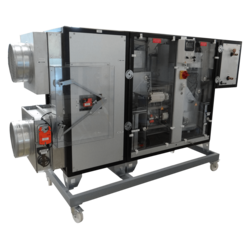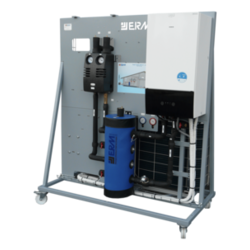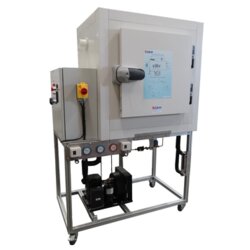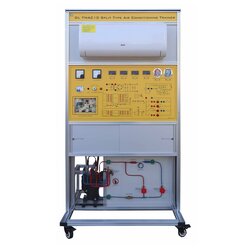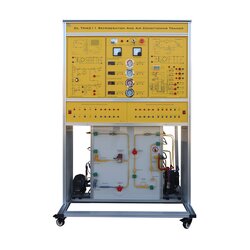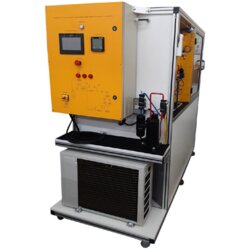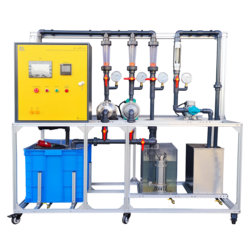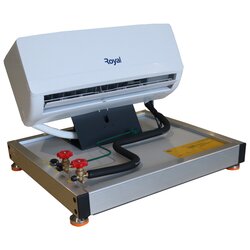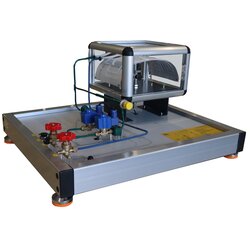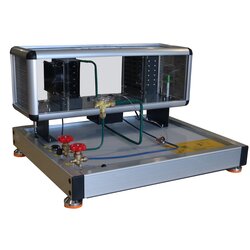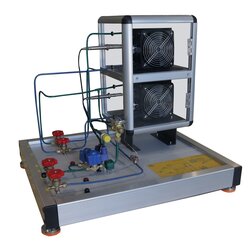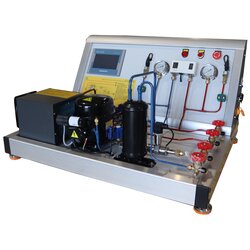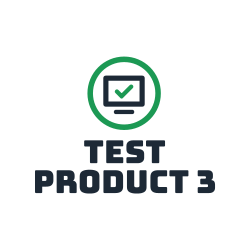HVAC training equipment & teaching tools
Sort by
Learn more about HVAC training equipment
In this section you will learn more about HVAC training equipment, what types of topics are normally covered in HVAC courses, and about different types of didactic training systems.
What is HVAC?
HVAC is an acronym for Heating, Ventilation and Air-Conditioning, and often include the add-on “R” for Refrigeration, so that the full acronym becomes HVACR, HVAC/R, or HVAC-R.
HVAC refers to the technology associated with the creation of an indoor environment which is both at a comfortable temperature and an acceptable indoor air quality.
These types of systems exists in residential buildings, office buildings, schools, factories, sports arenas and many other built environments.
The profession involved with installing, maintaining, and repairing various indoor climate control systems is called a HVAC technician.
To become an HVAC technician one can enroll and complete an HVAC training program at a local vocational school, community college or government training center.
Topics covered in HVAC training courses
A full HVAC training course covers various fundamental topic areas such as blueprint reading, understanding schematics & symbols, making measurements, basic mathematics, hand-tools, portable power tools, troubleshooting skills and industrial safety and health. Furthermore, a fully-fledged course normally goes deeper in a few areas:
- Electrical Systems
- Mechanical Systems
- Air-Conditioning & Refrigeration Systems
- Energy Conservation
- Industrial Hazard Control
- Mechanical Maintenance Applications
- Process Control Instrumentation
- Programmable Logic Controllers
- Rigging and Equipment Installation
- Welding
To get a full overview of a well-structured curriculum you can see this course profile of an online HVAC technician training course, listing each sub category, and furthermore the topics and learning objectives of each lesson.
Types of HVAC training equipment
There are some courses online, but for an HVAC technician to become proficient in relevant generic hand skills it is important to also practice kinesthetic learning, to “learn by doing”. Any vocational school, community college, TVET college or training center will offer their students this type of learning.
Normal HVAC training systems comes as hardware built out of industrial components, such components that the students will encounter in their workplace. These training systems are sometimes referred to as “training rigs”, “training panels”, “training equipment”, “teaching tools” or “lab trainers”.
These systems are built to simulate real world scenarios with built-in real fault simulations so that the trainers can teach and assess the students troubleshooting and problem-solving skills. The systems are often integrated with some sort of automation, either home automation or industrial automation such are programmable logic controllers (PLCs).
HVAC training equipment always come with content such as user manuals, suggested curriculum, lesson plans, teacher materials and student materials including worksheets. Some producers have digitized their content delivery so that its easily available for students and teachers, not only in class, but also from students’ devices which gives them the possibility to student wherever and whenever they want.
